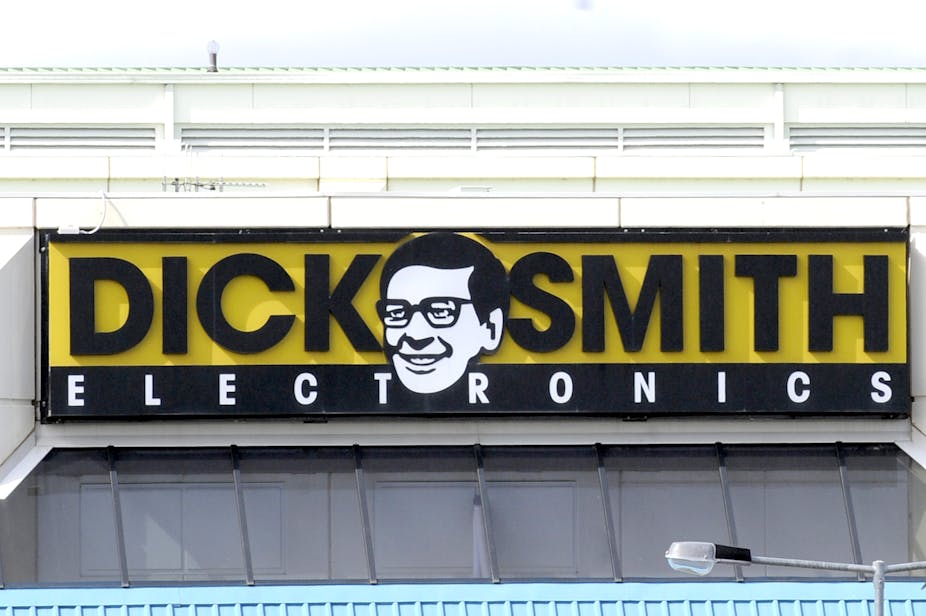Retailers: be careful what you underestimate. Whether it’s the competition, the consumer or the channel to market, if the writing is on the wall - you’d better read it. Globally, the consumer electronics retailing sector has experienced an agonising dilemma for a long time. Closer to home, Woolworths’ decision to offload electronics retailer Dick Smith highlighted the need for new strategies that will allow bricks-and-mortar electronics stores to thrive amid intense competition from a throng of online retailers, as well as price-driven behemoths such as JB Hi-Fi and Harvey Norman.
On the one hand, innovation and new product development has flooded the market with the latest “must-have” gadgets, gizmos and appliances, in some cases reducing a product’s lifecycle to a matter of months before a replacement is considered. Even I have put a perfectly useable Apple out for hard rubbish, and last year’s mobile phones are given to the kids as toys. On the other hand, shoppers who buy new technologies have been using these new technologies to, well, buy.
Every piece of research released points to the fact that more consumers are at least researching and often buying online, reducing the process to look, tick, click. After all, consumer electronics are homogenous commodities: just model numbers, specifications, colours and accessories. Shopping online for groceries is convenient, but not necessarily advantageous in terms of price, while shopping for clothes can be quick and easy, the social “touch and feel” aspect is missed by many. However, for the consumer electronics sector, convincing the customer that the shop is the place to be has been challenging - even for the best. In the US, for example, it was thought for a long time that Best Buy had solved the problem with their advanced multi-channel blend, which mixed store, web and staff into the epitome of the “seamless multichannel experience” that we heard so much about in Australian retail seminars and sending the more conventional competitor, Circuit City, into cardiac arrest.
But even Best Buy is experiencing problems with sliding profits, a retreat from its UK and Chinese operations, and a “let’s try anything” strategy, which has ranged from high-service to no-frills and everything in between. Despite the writing on the sector wall in the mid 2000s, which clearly pointed to that fact that innovative products and innovative retailing approaches needed to go hand-in-hand, Australian electronics retailing remained decidedly conservative (some might say Luddite), preferring to play the high-low price game and bolster slim margins with foggy prices, extended warranties and often over-priced accessories. JB Hi-Fi turned up the volume, and provided a much-needed breath of fresh air and a welcome relief from dull 1980s stores and staff who wore the same colour uniform as the carpet - and they should be commended for doing so. But even JB Hi-Fi has found the current economic and consumer climate difficult to bear.
But what of the future? In the same way that horses had to compete with cars at the turn of the last century, bricks-and-mortar retailers have to accept the fact that even with the web on their side, shoppers will continue to look further and deeper into cyberspace to secure the latest and the cheapest. Moving purely or largely online is certainly one option. Specialising in a category is another. For example, last year Harvey Norman launched its GST-free Direct Import website, catering for consumers of video games and consoles. Retailers could also choose to move upmarket to attract previously alienated shopper segments, as in the case with the UK retailer Currys “Black” brand or, alternatively, appeal to the pallet-loving drive-by bargain hunter, as with Best Buy’s recent Warehouse B concepts. Developing a brand-specific offer (such as Sony and Apple) is also feasible. Finally, creating greater in-store appeal and a true focus on a differentiated product, service and experience-based offer by appealing to a shopper’s sense of being, sense of belonging, sense of knowing - as well as their five senses - is another way for electronics bricks- and-mortar stores to remain viable.
However, one thing is for sure: the consumer electronics retail battlefield is not the place to be if your business strategy is not at least as innovative and as rapidly evolving as the products you sell.

